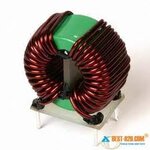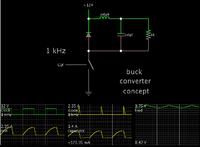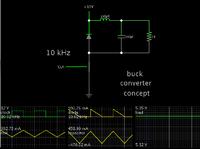mitz
Junior Member level 2
In this buck converter, Voltage reduces with increase in frequency.
PWM 1 kHz, DUTY CYCLE 50% - Voltage around 11.5V
PWM 10 kHz, DUTY CYCLE 50% - Voltage around 5V
PWM is generated with Arduino using tone method (square wave)
The inductor is toroid type, taken from a 600VA APC UPS. Of the 4 pins, only 2 are connected. (Image attached)
Capacitor tried are 330uF, 200v and 2200uf,60v
Why is increase in frequency reducing voltage.
Frequency need to be increased above audible range.
Would you pls suggest where the problem is.
PWM 1 kHz, DUTY CYCLE 50% - Voltage around 11.5V
PWM 10 kHz, DUTY CYCLE 50% - Voltage around 5V
PWM is generated with Arduino using tone method (square wave)
The inductor is toroid type, taken from a 600VA APC UPS. Of the 4 pins, only 2 are connected. (Image attached)
Capacitor tried are 330uF, 200v and 2200uf,60v
Why is increase in frequency reducing voltage.
Frequency need to be increased above audible range.
Would you pls suggest where the problem is.
Attachments
Last edited:



